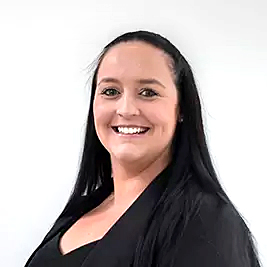11 common myths about buying your first home

Looking to buy your first home? If you’re feeling overwhelmed with all the information out there, you’re not alone.
There are plenty of myths and misunderstandings floating around when it comes to taking out a mortgage. Unfortunately, many of these misconceptions end up costing buyers time and money — or worse yet, stop newbie buyers from getting on the property ladder altogether.
So how do you separate the fact from the fiction? In this post, we set the record straight on 11 of the most common first home buyer myths.
1. It’s too expensive to buy a home
Your home is most likely the biggest purchase you’ll make in your lifetime. However, this doesn’t mean that it’s impossible to buy a home. In fact, there have never been more government schemes and grants in place to help Australians purchase their first property.
Some of the schemes available for first home buyers include:
- First Home Loan Deposit Scheme (FHLDS). This scheme supports eligible first home buyers to build or purchase a home sooner. Eligible first home buyers can build a new home or purchase an existing property with a deposit of as little as 5 per cent, and the National Housing Finance and Investment Corporation (NHFIC) will guarantee the participating lender the remaining 15%. This scheme is limited to 10,000 spots per Financial Year. Learn more here.
- FHLDS New Home Guarantee. In 2020, the Federal Government announced an additional 10,000 FHLDS places for the 2020-21 financial year. These spots are specifically designed for eligible first home buyers who are looking to build a new dwelling, or purchase a newly built home. Learn more here.
- First Home Super Saver Scheme. The First Home Super Saver Scheme allows you to make eligible, voluntary contributions into your superannuation, which you can later draw on to help with the purchase of your first home. Learn more here.
- HomeBuilder grant. The HomeBuilder grant provides eligible owner-occupiers (including first home buyers) with a grant of $25,000 to build a new home or substantially renovate an existing home. The Homebuilder Grant is currently available until 31 March 2021.
- First Home Owner Grants. First Home Owner Grants are state and territory grants to offset the effects of GST on home ownership. Under the scheme, eligible first home owners can receive a one-off grant towards the purchase of their first home. The size of the grant and the eligibility criteria vary from state to state, so check the First Home Owner Grant website for more information.
- Stamp duty concessions. Stamp duty is a tax imposed by state and territory governments on the purchase or transfer of real estate. If you’re a first home buyer, you can benefit from stamp duty concessions for properties up to a certain price threshold. Each state and territory has its own set of stamp duty concessions for first home buyers, so check the revenue office website for more information.
2. You need a 20% deposit to buy your first home
While a 20% deposit is generally the number people have in mind as the minimum amount needed to buy a home, this actually isn’t the case. Lenders understand that saving up a six-figure deposit can be tough, which is why you can get a home loan with a deposit as low as 5%.
Keep in mind that if you’re taking out a mortgage with less than 20% deposit, you’ll need to pay for Lender’s Mortgage Insurance, a premium one-off fee that covers lenders for low-deposit, riskier loans. However, it means that you can own your dream home sooner, rather than later.
3. Lender’s Mortgage Insurance is there to protect you
Lender’s Mortgage Insurance (LMI) is exactly as it sounds: it’s an insurance policy that protects the lender.
Some home buyers mistakenly believe that LMI is there to protect buyers in case they default on their loan. In fact, the opposite is true: LMI safeguards the bank in case a borrower defaults on their loan.
Lenders hedge their bets on all loans by using third-party insurance companies. If you have a lower deposit, the insurance company will charge a higher premium to your lender as they view the loan as more risky — which the lender will, in turn, pass on to you.
Note: Lender’s Mortgage Insurance premium is generally capitalised on top of the loan so you don’t have an additional out-of-pocket expense.
4. Banks won’t lend to me if I’m a sole trader or small business owner

As a small business owner or sole trader, you can absolutely get a home loan — you just need to go through a different application process to that of a regular PAYG employee.
Many lenders will require you to provide a long list of documents in order to demonstrate your taxable income and prove that you are able to make your mortgage repayments. While the documentation requirements vary from lender to lender, some universal documents you will need include:
- Individual tax returns
- Corresponding ATO notice of assessment for this period
- Business activity statements (BAS)
- Other financial information related to your business, such as tax returns, profit and loss statements, balance sheets, and business transaction account statements
For more on getting a home loan as a sole trader, have a read of our blog post here.
5. You can’t get a home loan if you have student loan debt
It might seem counterintuitive to be able to take out a loan while you’re paying off another loan, but you absolutely can with your student loan. Banks look at your HELP debt based on how much you’re required to pay each year from your annual income, not how much you have owing.
While having a HELP debt may lower your borrowing capacity, it definitely won’t restrict your ability to get approved for a home loan.
6. A variable rate is the best option
Variable rates might seem like the best option at the outset, because of the flexibility and the fact that you can make additional repayments on your loan. However, opting for a variable loan makes it much more challenging to budget for the long term. On the other hand, a fixed-rate loan offers you security and stability with your repayments. However, you have less flexibility to make additional payments, and the interest rate on your loan will remain unchanged — even if interest rates go down.
If you’re not sure which option to pick, it’s worth considering a split loan. With a split loan, you get the best of both worlds: part of your loan will be fixed, while the other part will be variable.
7. Lenders follow the interest rates set by the RBA
The RBA cash rate and the interest rates offered by lenders aren’t the same. The RBA cash rate is the interest rate that every bank has to pay on the money it borrows. If the RBA changes the cash rate, banks can then choose to pass this on to their customers.
For example, if the RBA drops its cash rate from 0.30 to 0.25, banks can choose to incorporate these savings into their home loan products, or leave their interest rates unchanged. That’s why it’s important to compare home loans, as different lenders may choose to pass on the rate cut in different ways for different products.
8. Conditional approval is enough to buy a home

Conditional approval, or pre-approval, means that a lender has agreed to lend you money for your mortgage in principle. This amount is an estimate of how much you can afford to borrow, provided you meet certain conditions.
While conditional approval is a good indication of the amount you can borrow for a home loan, it is by no means a guarantee that you’ll get formal approval for your home loan. You can make an offer on a property with conditional approval, but bear in mind you will still need to meet all the conditions outlined by your lender and submit a loan application to get formal approval.
This is particularly important to keep in mind if you’re bidding at an auction. If you win, your contract will be unconditional and you will be required to pay a deposit, regardless of whether or not your formal loan application is approved.
9. You should take out a mortgage with your existing bank
Plenty of first home buyers instinctively default to taking out a mortgage with their existing bank without shopping around. However, just because it’s your current lender doesn’t mean they have the best deal for your home loan.
It’s a good idea to compare different home loans and shop around before making a decision. At Rateseeker, we’ll seek the sharpest rate for you, based on your unique situation and home ownership goals. Get started for free in three easy steps.
10. You’re locked into your lender for the duration of your loan
Even if you do end up with a less than ideal home loan package, you can always refinance your mortgage later down the track. Refinancing can help you secure a more competitive home loan rate, or gain access to additional features such as an offset account.
Bear in mind there are fees associated with refinancing your mortgage. Learn more about refinancing on the Rateseeker blog.
11. You have to pay to work with a mortgage broker
A mortgage broker can help you navigate the complexities of the market and work with banks and lenders to find the right home loan for your needs. A good broker can help you secure a competitive interest rate, and ensure everything goes smoothly throughout the entire home loan process.
Many first home buyers mistakenly believe they need to pay for the services of a broker. However, mortgage brokers (like us at Rateseeker) are paid a commission or fee by lenders and banks. This means that in most cases, you don’t need to pay anything for their services.
Learn more about the benefits of using a broker here, or get in touch with us to see how we can help you seek a sharper home loan rate today.
** General Advice Warning
The information provided on this website is general in nature only and it does not take into account your personal needs or circumstances into consideration. Before acting on any advice, you should consider whether the information is appropriate to your needs and where appropriate, seek professional advice in relation to legal, financial, taxation, mortgage or other advice.




